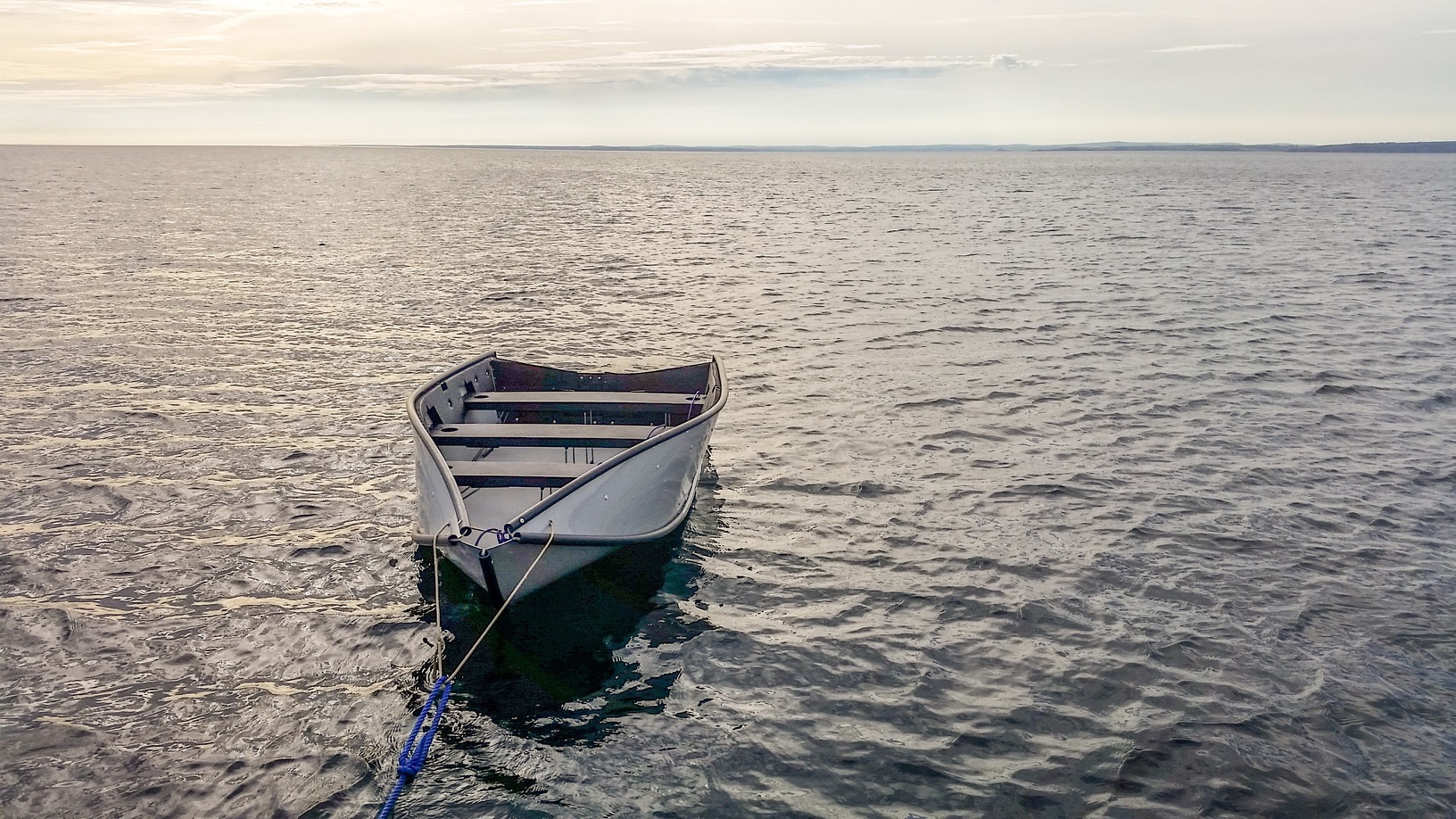The Isles of Scilly? Not really.
Anchor,
Cornwall,
Falmouth,
Mullion Cove,
Sailing,
Scillies
We left Falmouth with high hopes of making it to the Isles of Scilly, far west off the English mainland. It would've been an 11-12 hour sail downwind and the weather forecast there looked so-so. But we didn't manage to leave quite in time, refueling took longer than we hoped and the wind was weaker than forecast at first. The plan was to go to the Scillies for a day or two, then come back to Falmouth, as the long term forecast wasn't quite nice enough to go straight through Biscay from there, convenient as that might have been.
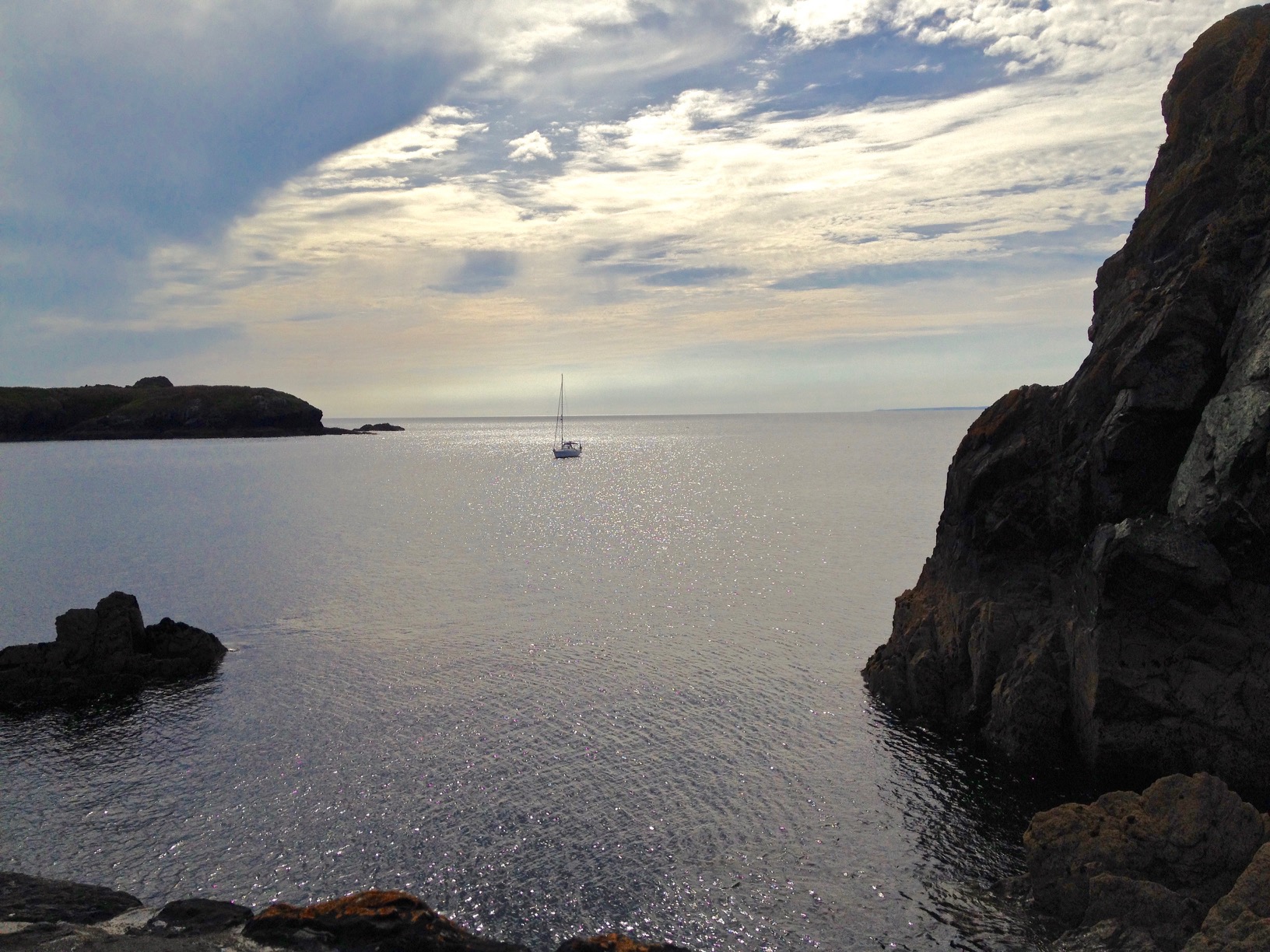
By the time we rounded the Lizard, the most southerly point of the British mainland, we were already too far behind schedule and decided to turn into Mount's Bay instead to explore some of Cornwall's sandy beaches. The wind on the other side of the headland was quite a bit stronger and we had an exciting sail into the shelter of Mullion Cove, a cozy spot with only one boat anchored two miles further south on a beach. We dropped anchor right in front of the tiny fishing harbour, whose walls seemed now repaired after violent storms damaged them in 2014. After some food we assembled and launched the dinghy and rowed ashore and beached inside the harbour, where a friendly tourist immediately interrogated us about our dinghy (the folding design is still somewhat unusual and we get asked about it all the time).

The harbour featured a few holiday cottages, a tiny café (closed), and some great views. Also several cars full of tourists. We walked a bit up the road and found a chocolate and souvenir shop, which were also closed. Heading back, we discovered a crack in the rocks which upon exploration turned out to be a natural tunnel leading through the cliff to a small sandy beach, accessible only at low tide.
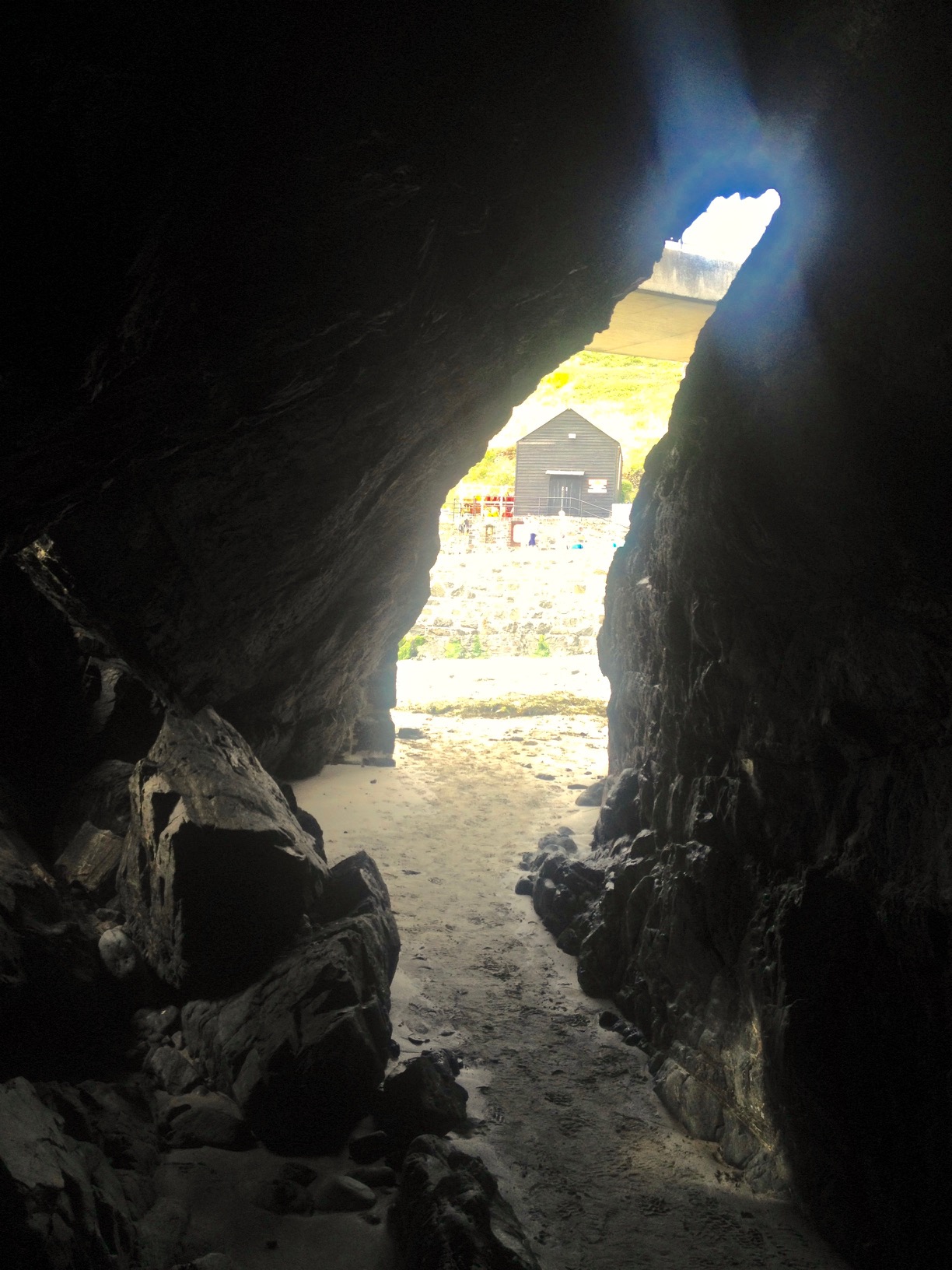
We rowed back to Songbird for the night and woke up in strong winds coming off the mountain. Our spot provided great shelter from the waves, but the wind was too strong to row ashore again and we had to sit it out on the boat. Another cruiser arrived and anchored nearby, but lost holding during the worst gust (44 knots on the instruments) and was blown halfway to the rocky Mullion Island by the time he got his engine on. He narrowly avoided some fishing markers that could've fouled his propeller (leaving him helpless) and eventually managed to re-anchor inshore.
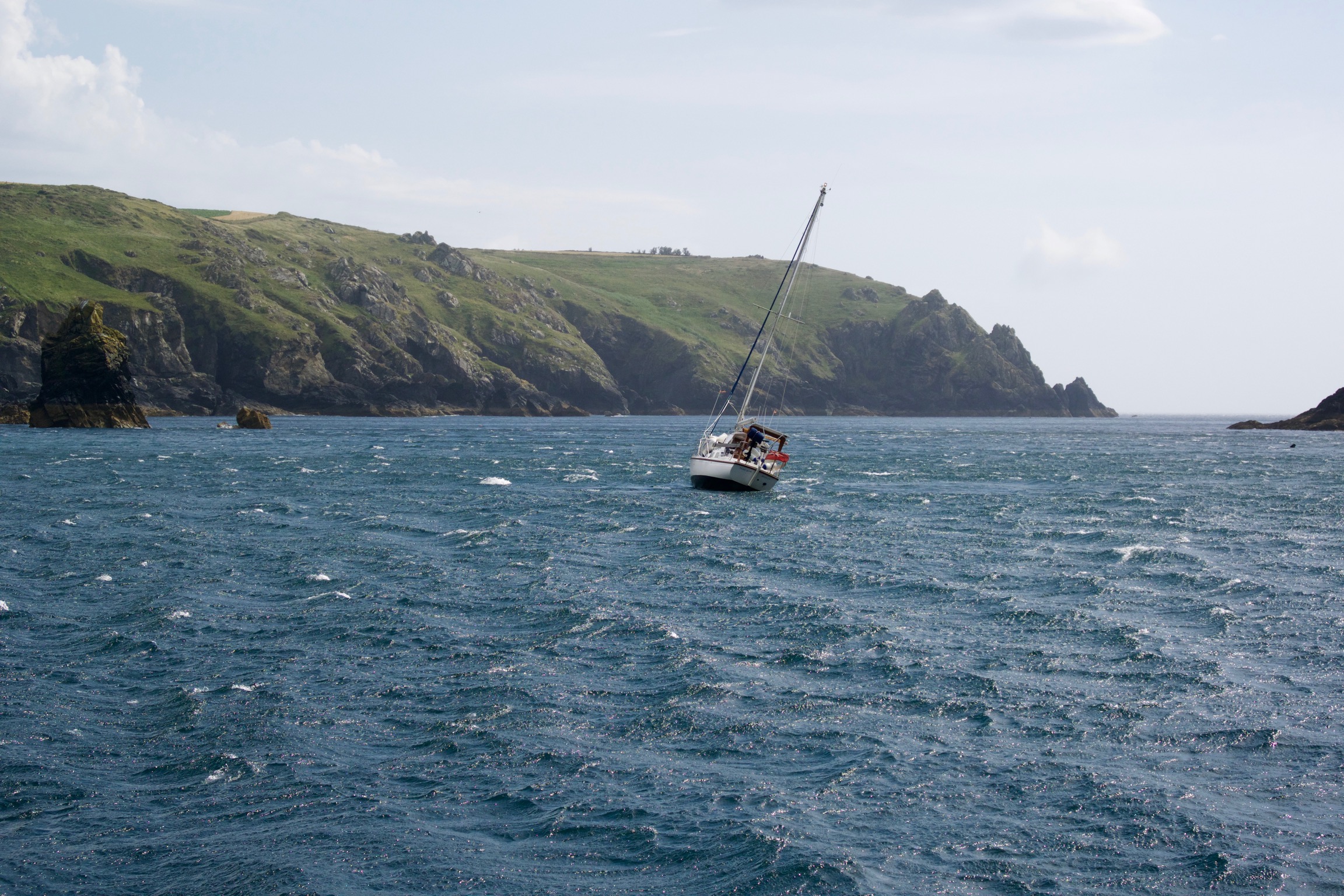
Our anchor held like it was nailed to the seafloor. It may have been because I researched the hell out of anchoring, got the best kit I could afford and learnt how to use it properly. Or it may have been just because it was wedged under some lucky rock, of which there were plenty. We'll never know - when we pulled it up at 1:30 in the night, it came up clean and quick. We had to leave then, as the wind was forecast to turn to the southwest and leave us without shelter and a rocky lee shore and we only had a few hours to round the Lizard and head back to Falmouth before it would start really blowing. We considered Penzance on the other side of the bay, but the forecast for the next few days now showed a gale warning and I didn't fancy riding that out at anchor in unfamiliar waters and with no safe harbour to run to.
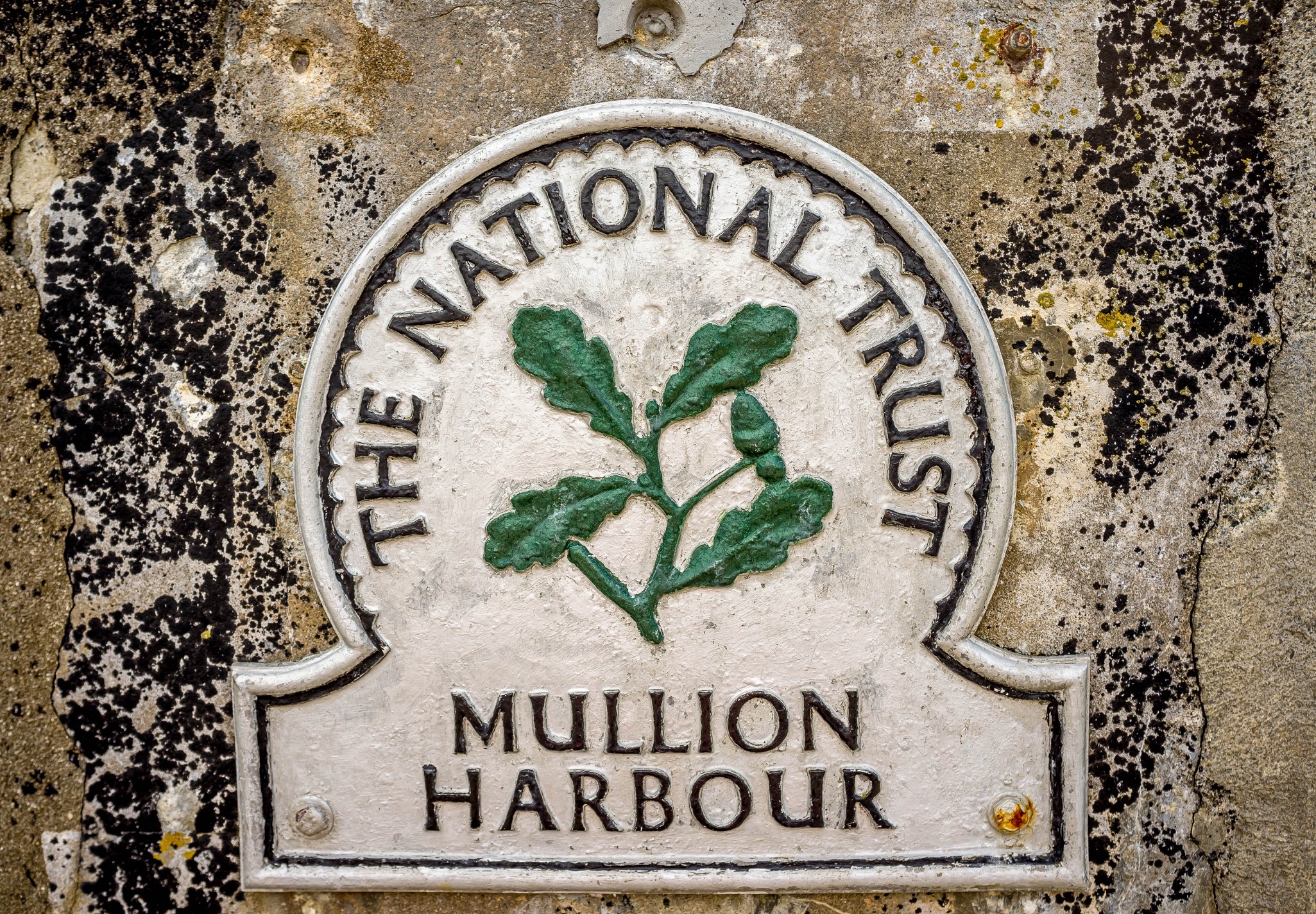
It was very dark when we left. We avoided some fishing gear we'd noted during the day and followed our own GPS track back out of the anchorage. Mullion Island was barely visible as a black hump against the horizon, the smaller rock next to it completely hidden until we shone a flashlight on it, spooking the bird population who took flight and complained loudly about such nightly disruptions. But soon the moon rose, casting a sickle of pale light on the seas and offering us at least some visibility. We nearly ran over two fishing markers anyways, whose black flags (very helpful at night) Elvyra spotted at the very last moment. We soon entered the range of the Lizard lighthouse, whose very bright light would guide our way until dawn. This night passage also allowed us to round the Lizard during slack tide. There was plenty of swell greeting us on the other side and when dawn finally came we found the occasional wave washing over the decks.
Dawn also brought fog. At first it was only obscuring the cliff tops near land, but as we closed in on Falmouth it dropped to sea level and thickened. We switched on the radar and fetched the red plastic trumpet (a "manual" fog horn). AIS is very useful, but we got a strong reminder that not everyone has it fitted when the bow of another sailboat burst out of the fog directly in front of us and on a collision course. We both dodged to starboard and they waved somewhat sheepishly as they passed closely - we had been tooting our horn, but they had none. I should've seen them on radar, but was distracted with navigation and the radar was zoomed out too far.
We felt our way into St. Mawes anchorage, as the tide was too low to try for Falmouth marina. Radar was immensely helpful in finding it - we could read about 30 echoes on the radar screen, but only saw two boats and a cardinal marker in the mist. This was also the very first time the anchor didn't immediately dig in. We hauled it up again and soon found why - it was fouled with an enormous ball of seaweed. We motored in slow circles while struggling to clear it all off, then re-anchored a bit further out and this time the anchor bit in the ground immediately and held against high revs in reverse. So assured, we set the anchor watch and fell into bed for a few hours.
Around noon the alarm clock woke us up and we found the fog had lifted and the usual busy traffic of Falmouth bay had returned and dinghies and boats were buzzing all around us. We could also for the first time actually see the boats in the anchorage (and the land). We raised anchor (no seaweed this time) and made our way up the river Fal into Mylor. Falmouth marina was unfortunately full to the brim - everyone was running for shelter from the coming weather.
After another nap, we walked into the only nearby town, Mylor Bridge, through a churchyard and along a beautiful path leading past the coast and some cottages hiding in thick green growth. We bought some supplies and since it was closing time, the friendly shopkeeper gave us their remaining bread from this morning for free. We managed to keep the bread dry on the way home, much unlike ourselves who got somewhat soaked in the rain. The dehumidifier was soon humming away, drying our clothes, shoes and shopping bags while we had a small feast and some relaxation, before crashing into bed for the night. The night sailing and repeatedly interrupted sleep had taken its toll on both of us.
We've given up on the Scillies for now and will set out straight for Biscay from here. Perhaps we were a bit too ambitious. Perhaps it was luck we didn't make it. There are now gale warnings for today and tomorrow. And we would've missed out on Mullion Cove, and the excitement it had to offer. Sitting here in a sheltered marina while the wind is building outside makes me feel glad about our choices though. Hopefully after this crap blows through we'll get our weather window at last.
